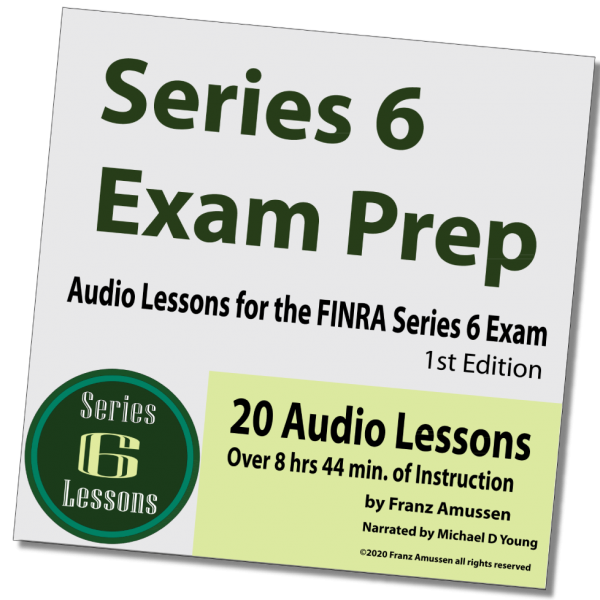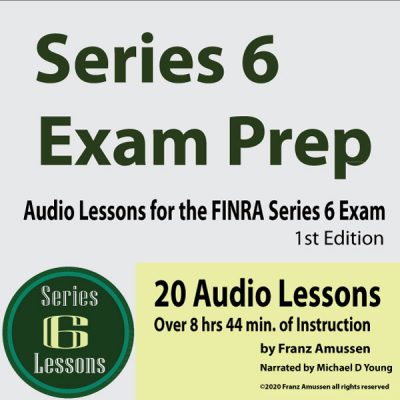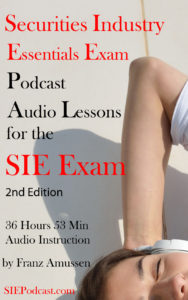Series 6 Lesson 15 Registration and Disclosure
Series 6 Lesson 15 Registration and Disclosure is what this lesson is about. Stock that is sold under a private placement is not registered and so it is considered restricted. Investors will have to hold it for a certain period of time before selling it. If the sale is less than 5,000 shares and $50,000, it can be sold with reporting. A transaction that small is not big enough to interest the regulators. When helping people buy and sell securities, you need to do your due diligence to make sure they are not trying to get around restrictions by dealing in restricted stock. These restricted stocks can be sold without restriction, however, to institutional investors, such as banks, insurance companies, etc. These sorts of buyers have over $100 million in store.
Registration and disclosure are supposed to help protect investors. Whether something is protected by the SEC, people can still face civil liabilities if they mislead or misrepresent pertinent facts about investments. You can sue other parties for damages through the civil courts who have done this. You have to prove that you were deceived and that you could not have know better through your diligent efforts.
The Security and Exchange Act of 1934 broadened the scope of the Act of 1933. It included anti-fraud provisions that apply to any person and any security. It means that anyone who lies or omits the truth when trying to buy and sell securities will be subject to legal action. This act officially created the SEC as the ultimate regulatory authority. Other regulatory institutions, such as FINRA, NASDAQ, and CBOE have to register with the SEC. When all of these SROs want to change a rule, it has to be sanctioned by the SEC. These organizations can exercise statutory disqualification, which means they can deny firms entry to their organization if they feel they are not well qualified enough.
The Maloney Act made it so that national securities organizations have to register with the SEC. Only the NASD was actually required to do so under the act.
The Howey Decision was a landmark Supreme Court case that determined that investment contracts are considered securities. They are an investment of money in a common enterprise, with the expectation of profits, and derived through the efforts of others.
If something is not a security, such as a fixed annuity, a whole/term life insurance policy, or commodities futures contracts, they are not subject to anti-fraud statues. A variable annuity is still a security, but a fixed annuity is not, because it is basically an insurance contract that is backed by the company’s general account.
A broker is a middleman, who charges a commission in order to help you buy or sell a security. They do not have any inventory. A dealer is directly involved, who wants to sell you some of his own stock or to buy some of another person’s stock. You always have to disclose whether you were the broker or the dealer in a transaction. Firms can act as either a broker or a dealer and often function in a variety of capacities.
Large companies register their offerings on a form called the S-1.
Investment companies fill out a more complex form, the Form N-1A that does two things: It registers them under the Investment Company Act of 1940 and registers their shares of securities under the Securities Act of 1933.
In your company’s prospectus, you should include a section called the Statement of Additional Information (SAI). The SEC requires the following things to be in the SAI: the fund’s history, the fund policies on things like borrowing and issuing, detailed information about officers, advisers, directors and any other related entities, information on brokerage allocation, audited financial statements, and a detailed description of portfolio securities.
The SAI is usually posted on a company’s website and you must disclose how to obtain it in the prospectus. You can usually find semiannual and annual reports to shareholders on a company’s website. A shortened, quick version of a prospectus is called the summary prospectus.
Generic advertising is any kind of advertising that does not specifically refer by name to the securities that an investment company is using or to the name of the investment company itself. It does need to have the name and contact info of a registered broker or dealer. It is not considered an offer for sale.
Sales literature cannot be misleading in any way, including omitting pertinent facts. The benefits and the risks have to be obvious in all advertising/sales materials.
When a company is running a TV, radio, Internet, etc ad, they will be committing some details from the prospectus. This is known as an omitting prospectus. It must include a statement that urges the potential investor to consider all the factors and risks carefully before investing. If you talk about performance data, you have to include a few qualifying statements: that the performance data is past performance, that past performance does not ensure future results, that the person’s shares might gain or lose value, current performance may be higher or lower than the quoted level. It should also include a way for the customer to get more information about current performance.
Series 6 Lesson 15 Registration and Disclosure
We also offer lessons for:
The Series 7 Exam
https://gumroad.com/l/ILYu
The Series 22 Exam
https://series6lessons.com/series-22-exam/
The Series 63 Exam
https://series6lessons.com/series-63-exam-lessons/
The Life Health Insurance Exam
https://series6lessons.com/insurance-lessons/
The SIE Exam (Securities Industries Essentials Exam)
https://series6lessons.com/finra-sie/
Click on any of them to find out more
Podcast: Play in new window | Download (Duration: 10:52 — 4.5MB)
Subscribe: Apple Podcasts | RSS | Subscribe to Podcast




